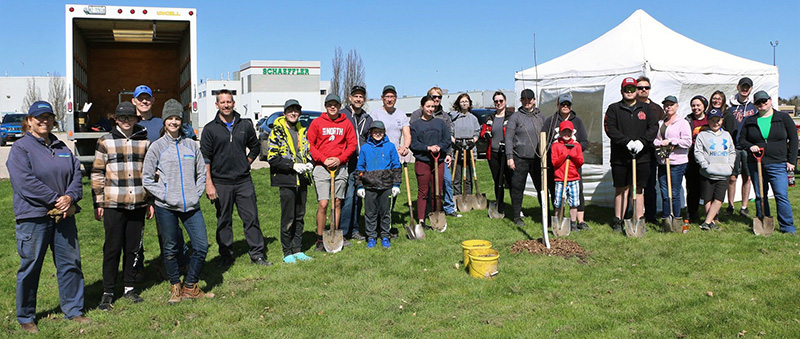Communities for Nature is back! (UTRCA weekly, May 20, 2022)
In a typical year, approximately 10,000 trees and shrubs would be planted through the Upper Thames River Conservation Authority’s (UTRCA) “Community Forestry” program. Through this program, local schools and community members join UTRCA staff to plant native trees and wildlife shrubs in municipal parks, along watercourses, and on industrial and commercial properties.
Not surprisingly, the pandemic had a big impact on this program, as well as the other programs in our Communities for Nature initiative – “Spreading Like Wildflowers” and “Aquatic Connections.”
Now, after two years of pandemic-related public health restrictions, Communities for Nature is back!
UTRCA staff are once again working with local partners to identify sites that can be restored, and coordinating community involvement in planting native trees and shrubs, aquatic plants, wildflower meadows, and prairies. Projects range from small, neighbourhood sites to large, multi-year corporate and municipal initiatives.
On Saturday, May 7, Schaeffler Canada employees, their families and friends planted 54 native trees on Schaeffler property in Stratford. The site is a soccer field and the trees will provide shade and windbreaks.

On Earth Day, the 11th London Scouts planted 200 trees at Fanshawe Conservation Area to help naturalize some camp sites, adding privacy for campers and increasing biodiversity.
Karen Pugh, UTRCA Resource Specialist, is pleased to be back working with the public. “People are inspired more than ever to do their part in improving our environment. It’s exciting and so enjoyable to help bring project ideas to fruition,” said Pugh. “We are just happy to be back with our community groups and individuals who are making positive changes!”
Communities for Nature benefits the environment and local communities by:
- Improving water and air quality,
- Providing wildlife habitat,
- Protecting species at risk,
- Increasing biodiversity,
- Building partnerships,
- Providing opportunities for students to get involved in their community, and to learn that their efforts can make a difference,
- Making our communities better places to live.
More photos and information:

